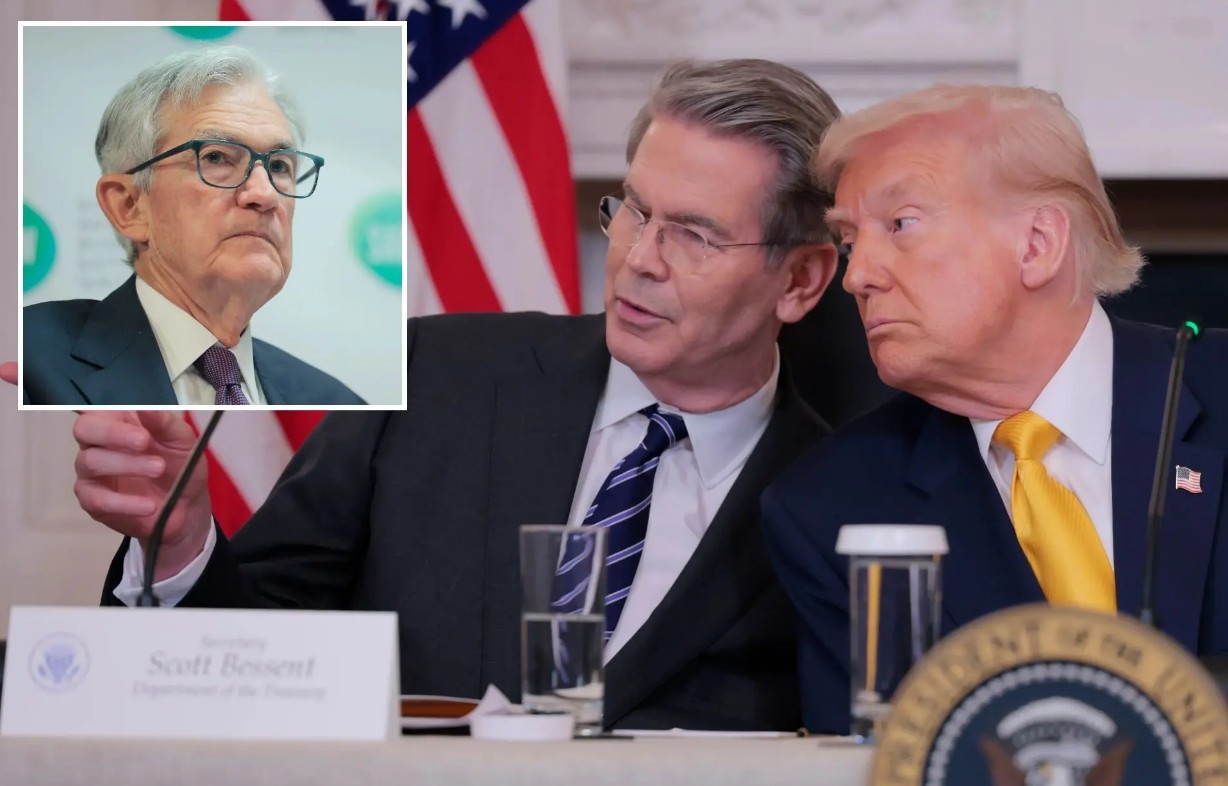Dollar Tumbles to 3-Year Low as Trump Seeks to Name Next Fed Chair Early, Fueling Soft Rate-Cut Expectations
The U.S. dollar fell to its lowest level in three years after reports that President Trump is accelerating plans to announce a successor to Federal Reserve Chair Jerome Powell well ahead of the tradit

The U.S. dollar fell to its lowest level in three years after reports that President Trump is accelerating plans to announce a successor to Federal Reserve Chair Jerome Powell well ahead of the traditional timeline. The move, interpreted by markets as a push for a more dovish monetary policy, has stoked expectations of earlier interest-rate cuts.
The dollar slipped to 97.2 against a basket of key currencies during Thursday’s Asian trading session, reaching a level last seen in early 2022. The decline followed a Wall Street Journal report detailing Trump’s dissatisfaction with Powell’s cautious stance on rate cuts and his growing interest in installing a more compliant successor.
Sources familiar with the matter said Trump has floated the idea of naming a new Fed chair as soon as this summer, significantly earlier than Powell’s term expiration in May of next year. Potential candidates reportedly include former Fed Governor Kevin Warsh, National Economic Council Director Kevin Hassett, Treasury Secretary Scott Bessent, former World Bank President David Malpass, and current Fed Governor Christopher Waller.
Trump’s frustrations stem from Powell’s resistance to swiftly lowering rates despite economic headwinds, including rising tariffs. Powell has reiterated the Fed’s independence and emphasized caution: “If we make a mistake here, people will pay…the cost for a long time.” While rate cuts remain on the table for 2025, Powell stressed that the central bank will “take a careful approach.”
Nonetheless, Trump has signaled urgency. “He goes out pretty soon, fortunately, because I think he’s terrible,” Trump said at a NATO summit, hinting that he already has a shortlist of potential successors. Among the frontrunners, Warsh—who maintains a hawkish reputation—and Bessent—well-liked on Wall Street—have emerged as leading options.
Former Fed Governor Kevin Warsh is viewed by Wall Street as a pure policy intellectual—and by many inside the West Wing as the riskiest bet. Warsh has voiced skepticism about low rates and warned of their long-term damage: “When rates are zero, that leads to very bad economic outcomes,” he said at a recent conference.
National Economic Council Director Kevin Hassett would offer the closest philosophical match to Trump’s pro-growth agenda; allies pitch him as a steady, data-driven communicator who could coax fence-sitting Fed officials. Traders, however, question whether a purely academic résumé equips him to navigate crisis-era liquidity flare-ups.
Treasury Secretary Scott Bessent elicits the warmest immediate market reaction. Bond desks credit his calm orchestration of this year’s tariff rollouts with preventing a disorderly Treasury sell-off, and equity strategists cheer his open enthusiasm for rate relief. Still, veterans warn that elevating the sitting Treasury chief could blur the line between fiscal and monetary policy, reviving 1970s-style credibility risks.
Former World Bank President David Malpass has recently won favor with Trump for blasting “outdated” Fed models and openly urging cuts. Currency strategists note that his outspoken dovishness has already seeped into rate-futures pricing, yet some political advisers fear Malpass lacks the television-friendly gravitas the president prizes.
Finally, incumbent Fed Governor Christopher Waller is the insider’s dark horse. His early-June call for trimming rates at the Fed’s July meeting endeared him to supply-side voices in the administration and put him at the center of dovish market chatter. Skeptics inside the White House counter that Trump barely knows him, and several regional Fed presidents privately question whether elevating a current colleague seen as the president’s proxy might fracture committee cohesion.
Economists warn that rushing the announcement could create a “shadow chair” who sways expectations before wielding formal power. Supporters argue that clarity now would anchor yields and help businesses plan. For Powell, the intrigue is background noise: this week he reiterated that “all I think about is handing my successor a strong economy with inflation in check.”
Whether the next chair proves a loyal dove or a reluctant hawk, the spectacle has already moved markets. The greenback’s latest lurch lower shows investors betting that Trump’s early pick will usher in easier money—well before Powell’s term ends next May.
Disclaimer: The views in this article are from the original Creator and do not represent the views or position of Hawk Insight. The content of the article is for reference, communication and learning only, and does not constitute investment advice. If it involves copyright issues, please contact us for deletion.